Rebuilding Moto: Motorola's Steve Horowitz Speaks
With the new Moto X further refining its flagship Android phone, the new Moto G revamping the company's most popular smartphone ever, and Moto 360 and Moto Hint making a double play for wearables, Motorola is certainly having an interesting month. With the whispers from the Her-like Hint still echoing in my ears, I sat down with Steve Horowitz, senior vice president for software engineering at Motorola, to talk about wearables, fitting into Lenovo's ecosystem, and what he'll miss when out from under Google's umbrella.The following is a lightly-edited transcript of my conversation with him.Chris Davies: I was reading through what we talked about back at CES, some of that was wearables strategy. You were being very coy. I thought it was interesting because at the time you were talking about how the two most discussed paradigms, at that moment, were the idea of a smartwatch or the idea of a wearable headset, like Glass. And you were saying "maybe there's room for something different," and now of course we see Moto Hint, which is like an assistant whispering in your ear. Even with the Moto 360, which you say you're not going to refer to as a smartwatch. So I think it's an interesting way to look at the wearables space.Steve Horowitz: I think one of the best compliments we would get about Moto 360 would be "Oh, I like your watch." And in fact that's happened to me a couple of times. Once we'd announced it I was able to wear it out and about, and people saw my watch kinda light up. I tend to keep a nice, simple face on it. People were, like, "oh, that's a nice watch." They didn't even know it was a smartwatch.
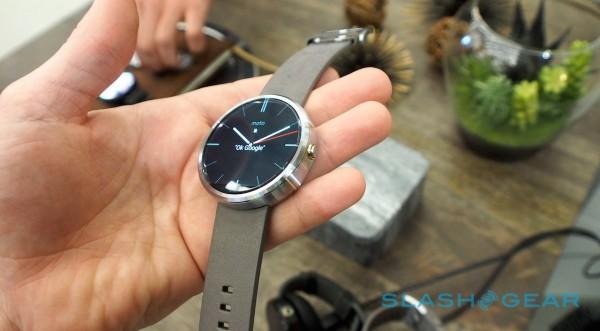
To me, it's this idea that if something's going to take a place in your life that's been occupied by something, it needs to at least be as good as the thing it's replacing. Then you step up from there. And I think that's the case with the 360: it does fit that category. One of the things that was really critical to us in the design of that was building really elegant, nice watchfaces, and building a suite of them that was also customizable.
"If something's going to take a place in your life, it needs to at least be as good as the thing it's replacing"
So that to me is all about aesthetic. It's not about getting notifications, or texting, or voice, it's about making a device that people want to wear. I think that's critical, because you can't even play in the game if all you're offering is functionality. If you want to appeal to a segment beyond the technologists, you have to be able to appeal to the aesthetic. I think that's a key thing we focused on.
Inside the Moto 360: Touring Motorola's Design Labs
With Hint, it's funny because everybody's had a Bluetooth headset in their ear at one time or another. Even people who aren't in the industry, it's a very common thing. Yet, until you stick something like that in your ear – which you're no longer embarrassed to wear, again this comes down to the aesthetic – it's subtle enough, yeah, you'll notice it, but it's subtle, it's not like this thing hanging down your side [mimes boom mic].
And then you experience this idea where using voice, or even a tap, and you ask a question and then you get an answer without doing anything else, it opens your eyes to the possibilities of voice interaction in a very intuitive way.
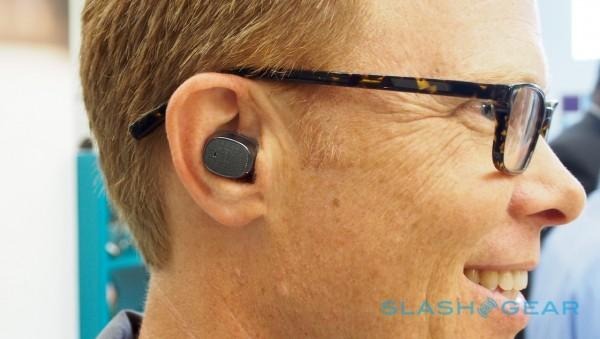
So, in my view, the whole wearables space is about having to think about the environment first, that the device is going to live in, and the context in which you're going to use it. You can't think purely functional, that's really important.
Another thing – and which I'm not going to claim we've completely nailed yet, but I think it's critical for us and everybody else in the industry to think about – is that the more devices you have that have interaction modality of some sort, the more you have to think about how those interactions work with one another.
You've got a voice trigger [on your wrist, in your ear, on your phone]; you've got notifications that show up here that also show up there. Getting it all to work really seamlessly and intuitively to the user is a huge challenge. I think that'll be one of the bigger challenges facing the industry as a whole: how do you get that right in a way that doesn't get in the user's way. What that needs is not thinking about the product as "oh, it's a watch." It's this watch and everything else it interacts with.
Chris Davies: Like a personal notification ecosystem: making sure the right notification goes to the right screen or device.Steve Horowitz: Right. It's a big challenge. And I think, if I look even more broadly than wearables, but this concept of ecosystem, I think Lenovo is our opportunity to look at each and every place or device that a consumer interacts with information on. So, everything from obviously Bluetooth headsets to phones, to watches, which we already do, well we also will do tablets with Lenovo. They're the number one producer of laptops. They make smart televisions.
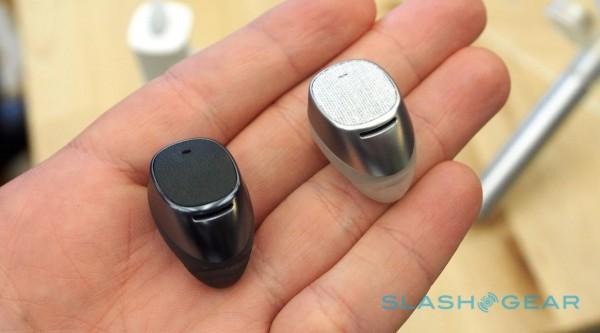
Literally, from everything from the smallest device in your ear, to the largest device in your living room, we have to think about how we make sure that that experience and the access to information for the consumer is aligned and perfectly consistent across all those devices.
Chris Davies: At the moment, Hint is quite a one-way device: you can talk to it like you would a Moto 360, but it doesn't bring you notifications. Something comes up on your phone, it's not being read out to you.Steve Horowitz: However, if a call comes in, you can answer it.Chris Davies: Of course, yes.Steve Horowitz: But you're right, there's no interface which brings notifications to the forefront.Chris Davies: And one of the things you were talking about on the new Moto X was being able to post to things like Facebook without having to look at the phone. It seems like an obvious thing which you would then carry over to the headset, the idea of "completely hands-off": no need to look at a screen, everything is being verbally confirmed. Is that a direction you see it going in?Steve Horowitz: Yes. In fact that's what we already do today. Any voice interaction you have with your phone, you can have with Hint as well. But, the broader concept you bring up I think is spot-on, which is, this area that I think is just beginning to emerge. Not just a hands-free but an eyes-free experience. What that means is, not just things show up in your ear, but if you utter responses where things happen, there's that read-back, there's the confirmation, there's the disambiguation.
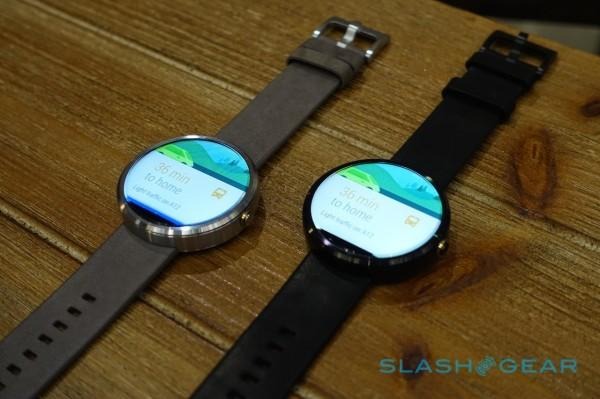
If you say "send text to Lisa" and there are three Lisas in your address book, either it has to decide which one you most recently send to, or it has to tell you "you have three Lisas, which do you mean?" and then you have to disambiguate it. So getting all that to work in an intuitive way, without ever looking at the screen, is I think one of the next big challenges here also.
Chris Davies: I can see as earpieces get more complicated and capable, and wrist-worn... what do you call it if you don't call it a smartwatch?Steve Horowitz: We just call it a wearable. Frankly, we just call it a watch.Chris Davies: Right. I can envisage a time where someone might start something on one device and then think "Oh, I wish I'd started this on my phone, instead, or my tablet." Or moving into talking about this Lenovo integration, "why aren't I doing this on my TV," when I'm sat with a 60-inch screen in front of me. We're seeing something in that direction with Apple, with Continuity. Right now, we have the functionality but it's still siloed – it starts on Hint, it finishes on Hint. Or it starts on the watch, it finishes on the watch.Steve Horowitz: Well, yes and no. You can use Hint and you can sit there and interact [with headset and phone]. If you want to sit there and use two devices for interaction, you can do that. You can use Hint and you can ask it a question, and it won't just read back the audio, it will show you the entire Google Now query and the result of the Google Now card on the screen.
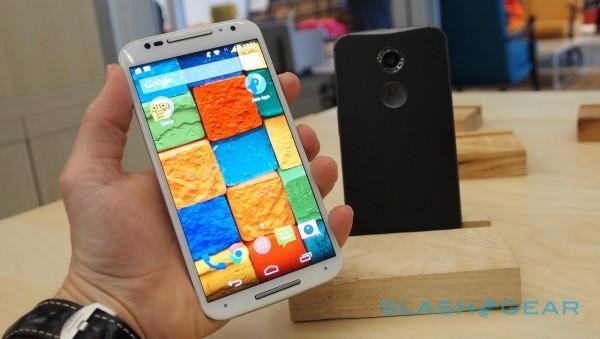
So, everything you're saying is being interfaced with the screen. However, we're also smart, because we know that if the phone's in your pocket, we're not going to light up the screen, because we know it's concealed. But if you're looking at it, we are going to let you have that full interaction.
And even with the first-generation Moto X, we took a baby step in the area that you're talking about, we had our Moto Connect feature, a Chrome plugin that allows you to send and receive texts wherever you were. You didn't have to think about it, just send it, receive it, and it would be in both places for you.
"How do you make sure you model an ecosystem experience around the right device, or the only device you have at the time"
But yes, that's exactly it. How do you make sure you model an ecosystem experience around the right device, or the only device you have at the time, but still make it something you can continue with, with a different paradigm. I mean, TVs are great for displaying tremendous amounts of information, but you're not generally close enough to touch it, and nor do you want to have a mouse or any kind of control. So, with that device you've got strengths and weaknesses, where you've, say, got to use voice more. One area to think about.
Chris Davies: Something else we talked about a few months ago was the smart home space, and I think that's got more interesting since we met at CES in that we've got Apple talking about HomeKit, we've got Samsung buying SmartThings.Steve Horowitz: Google buying Nest, and Nest putting out a third-party APIChris Davies: Exactly. A lot of the pieces coming together. In January, you said you didn't envisage Motorola being a player specifically in the smart home space...Steve Horowitz: I don't think Motorola – even with Lenovo – is necessarily a driver in that space, but we will absolutely be a participant in that space. So, as consumers start to adopt – because we're still so early, we're early in wearables, we're really early in home automation – so as consumers start to have smart locks, even Bluetooth as an authentication and as a security mechanism, it's just starting to see the light of day as well. One of our other announcements at this event is the little battery pack which is also a Bluetooth LE device [the Motorola Power Pack Micro] which can be used for authentication.
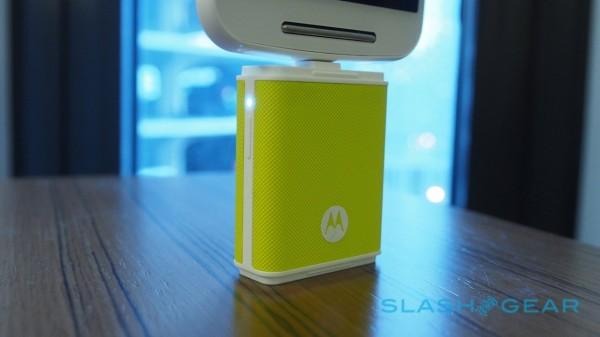
So as consumers start to have these smart devices, and as consumers become energy conscious and realize that there's actually a financial benefit: there's a coolness, I can turn my lights on and off, I can monitor the temperature of my home when I'm somewhere else, but there's a real economic benefit to allowing your home and your device to be aware of one-another.
So I think we will – not trying to allude to anything – but we will be watching and participating in that space as it develops. But I don't think you'll see us jumping in there with any big announcements in the home space.
"There's a real economic benefit to allowing your home and your device to be aware of one-another"Chris Davies: Android Wear has been... it's obviously still early days for it. The reception has been mixed, I think you could say. There's still some patchy understanding of what it does. Do you see that as being an ecosystem problem, in that the wearables that have launched so far have been very "geeky"?Steve Horowitz: Well, if I were to put a positive spin on it, I'd say we're still in the learning phase on the ecosystem side. [laughs] If I were to comment more specifically, I'd say that, typical of a completely new idea or a a new technology and a new space, it's always hard early on, and there's always an adoption curve. Tablets, y'know, existed long before the iPad. If you really want to go a long way back, some of the technologies Apple had in the Macintosh existed long before the Mac existed, but Apple commercialized it.
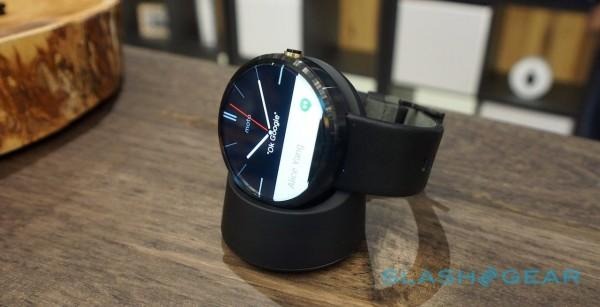
I think that Android Wear is a little bit similar. It truly is a consumer product, don't get me wrong, but it's a 1.0 product. The team's great, they're already talking about things they're going to be bringing really quickly. It'll get better really quickly. At the same time, the companies like Motorola – and you'll see other companies doing this as well – will learn what consumers value in terms of the form-factors, and the design, and the functionality, and the screen, and all that sort of stuff.
Everyone is in the learning stage, and I think it shows a lot of promise. Yet, I don't think anybody expected it to be an out-of-the-park, home-run, mass-consumer phenomenon.
Chris Davies: The new Moto X, it's the same price as it was before...Steve Horowitz: I think it's even less than our introductory price, but yes.Chris Davies: Right... I think one of the expectations perhaps was that Motorola would find a way to continue to push down that flagship pricing, to push this idea of unlocked devices as being "the way forward" rather than carrier-subsidized. So whereas $99 with a two-year agreement is compelling, I think the idea of a more affordable, unlocked, bought-direct device is more interesting. Was it a conscious decision to spec it to a level where it would be that $499 price point.Steve Horowitz: Absolutely. Our conscious decision wasn't necessarily to target a price point, it was to hit a sweet spot on consumer value. Not just price, but what you get. There are lots of things where you could have a device that was cheaper, so technically you get more value, but it's not more value because you have to make so many trade-offs if you go down another $100.
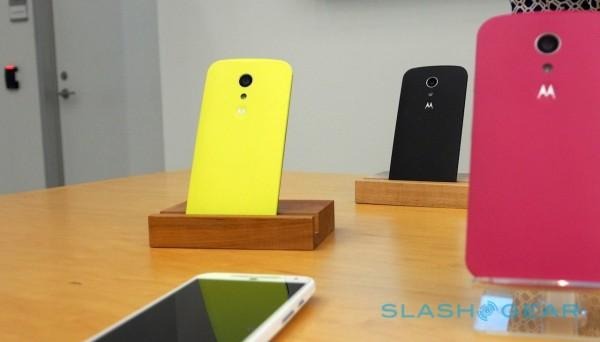
So what we did was deliver two devices [in Moto X and Moto G], which we feel each – in its price category – offers incredible value. There really is no compromise. If you get a Moto X, or a Moto G, and you compare it to devices that are far more expensive, you're not going to find that our devices are lacking. In fact, people have done comparisons of the Moto E, our even lower-end product, with the Galaxy S5, and said "well, this one's actually even faster, the Moto E is actually faster than the GS5 when I scroll, or when I make a call."
This is the new Moto X for 2014: Hands-on
It's like, what do people mostly do with their phones? They interact with apps, they make calls, they use web browsing. So they can pay $700, or – in the case of the Moto G – $179, unlocked, and get no-compromises, beautiful screen, beautiful device, lots of great functionality which is going to be upgraded really, really quickly.
Chris Davies: Soon, you're no longer going to be a Google company. What's the thing you think you'll miss the most from going from being under that umbrella?
"We had very little contact with Google while we were part of that company"Steve Horowitz: That's a good question. We never had free lunches, so we're not going to miss that!
I would say, there is obviously... Google's an amazing company. I worked there for three years, and loved a lot of things about it, its culture and its values, that kind of thing. And there are obviously brand affiliations, which are positive. If there's one thing we'll miss it's that, a Google company gives a brand affiliation that I think Lenovo has, outside of the US and in China in particular. The Lenovo brand is incredibly popular.
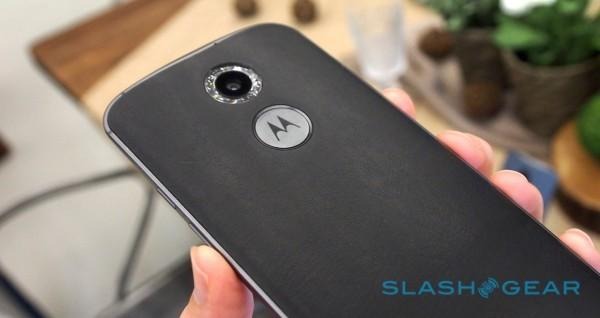
I think we'll miss that a little bit, but that said we feel very good about the fact that what we've done, what we've delivered, what we've developed: the technologies, the ideas, the culture, the thought, the engineering, all that sort of stuff, that's all been Motorola from day one.
So we're not going to miss a thing, or miss a step, when it comes to... I mean, Google, as much as we would've loved them to, was not sitting in our design meeting saying "Do it this way, do it that way, add this feature, do this." We had very little contact with them while we were part of that company, so I feel very good about the future prospects of Motorola under the compass of Lenovo. And as we talked about from an ecosystem perspective, from a global opportunity perspective, it's a pretty bright future I think.
Catch up with everything – the Moto X, Moto G, Moto 360 and Moto Hint – from the Motorola launch last week.
